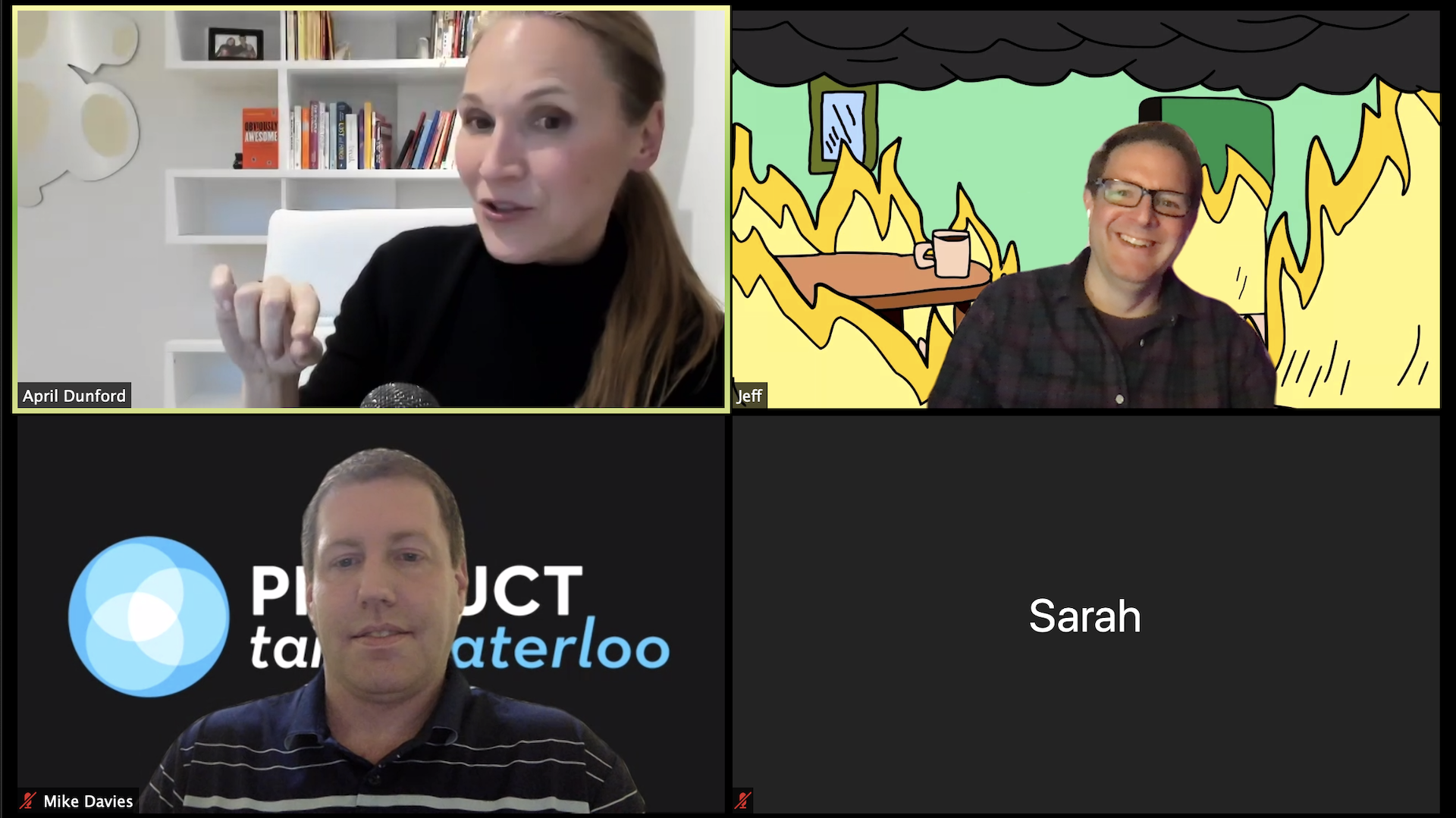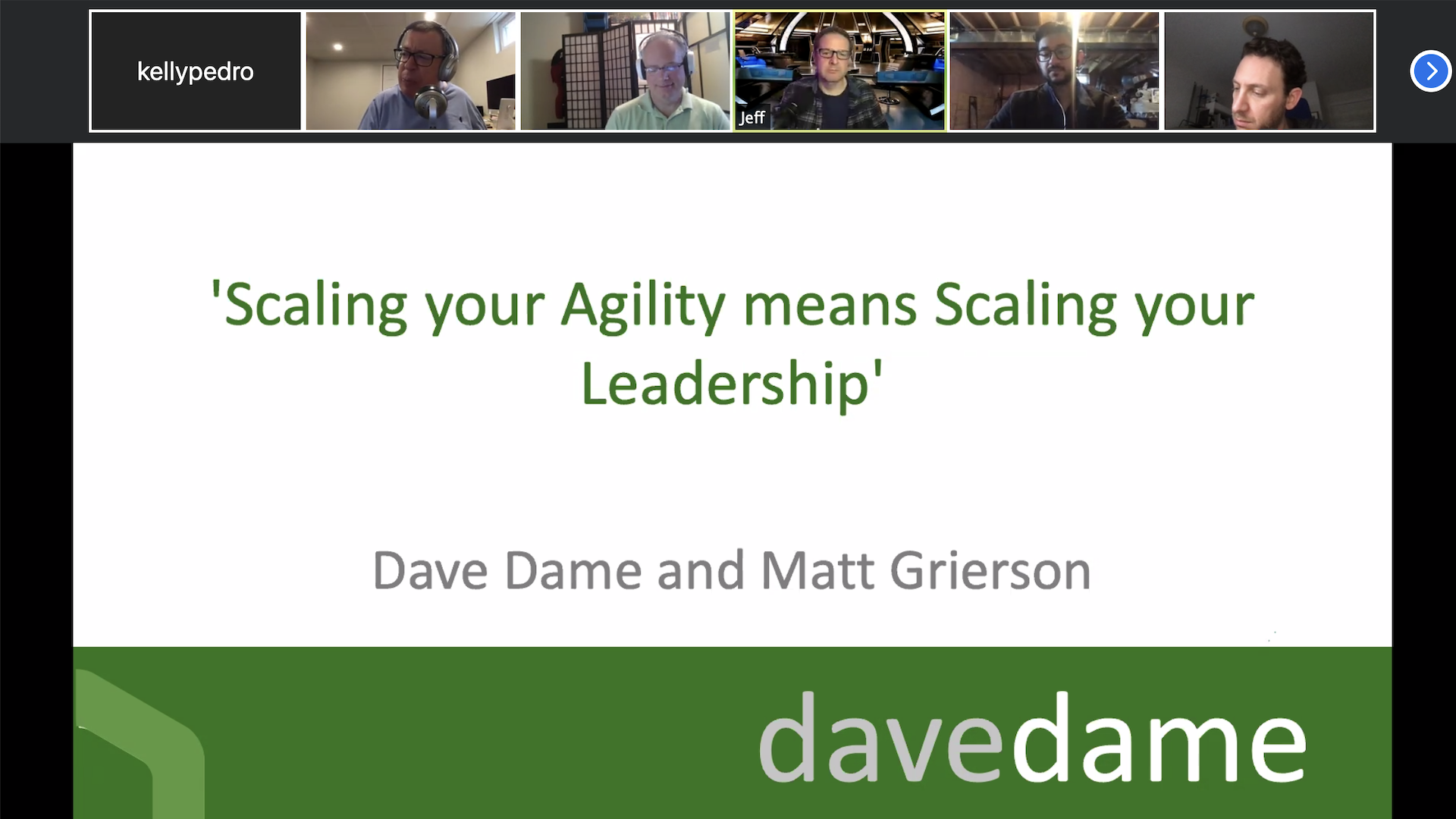For most businesses, these are tough times. But some are thriving.
Depending on your business, you’re either scaling back or scaling up.
No matter which boat you’re in, it’s more important than ever to talk to your customers and understand how their priorities have shifted, product positioning expert April Dunford said at a virtual meeting of ProductTank Waterloo, where the focus was on product positioning strategies in a downturn.
“The trick is you have to know what’s going on with your customers. Have their priorities changed?” she said.
Sometimes it’s obvious, said Dunford. If your customer is in the sports, travel, or tourism industry, they are likely focused on survival. But if you’re in the medical technology industry, your customers may be scaling up.
That’s why you need to talk to your customers to find out how their priorities have shifted and how your product or service fits with their new reality, said Dunford.
Product positioning is a difficult concept to understand and it’s often misunderstood. Dunford, who wrote Obviously Awesome: How to Nail Product Positioning So Customers Get It, Buy It, Love It, defined positioning as the way a product is uniquely qualified to offer something of value to customers.
Positioning in a downturn is all about understanding what’s changed for your customers and whether your product is still relevant to them, said Dunford.
She offered the meetup an example of an events company that switched gears after all in-person events were cancelled because of COVID-19. Rather than shut down, the company refocused on virtual events and reached out to their customers who had cancelled in-person events and offered to help them put on virtual ones.
The ProductTank Waterloo meetup was a combination of a fireside chat with Zeitspace partner Jeff Fedor, along with questions from the audience. About 55 people attended.
One participant asked how much businesses should focus on software feature releases. Businesses need to contextualize the feature release for the current environment and think about the value proposition, said Dunford.
“Why is it important to customers right now?” she asked.
Business-to-business propositions are all about either helping businesses make money or save money. While many businesses were focused on making money before COVID-19, since the pandemic, the value proposition has turned toward saving money because many are now focused on survival, she said.
Some businesses may find customers are doing a long-term shift. If that’s the case, then you should follow your customer’s lead.
And don’t touch that marketing budget, Dunford added. Instead, refocus your marketing priorities. Businesses may have customers going through dramatic cost-cutting measures and need to focus their efforts on saving those customers because it’s so much more expensive to get a new customer than to keep existing one, said Dunford.
“You may want to take that revenue hit now to keep them,” she said.
But before you take the revenue hit, make sure you’re losing those customers because of pricing and not because your product isn’t relevant any more, she added.
And what if you have a relevant product at the moment: How do you market it without coming across as though you’re taking advantage of the situation?
“You need to talk about this in a way that shows genuine concern for your customers,” said Dunford. “Figure out how to check your company ego. This is a bad time to do risky PR. I would err on the side of safety. You need to read the room right now.”
At the beginning of the pandemic there was a lot of tone deaf marketing and communications, she said. Stop thinking about your business for a minute and think about your customer’s business. Focus on empathy.
One way to stay attuned to customers is through a customer advisory board. If you don’t already have one, now is a good time to form one, she said.
Don’t know how to build one?
Dunford, who has spent 25 years as an executive and has worked with both startups and tech giants, offered a few tips:
-
Invite customers to your board, but make it special. Underline that they were selected because you have great respect for their knowledge — and they’ll get access to your executive team.
-
Customers want to be on your advisory board because they want early access to stuff, but it’s also a key way for them to network with their peers. If you already have someone on board that you know others will want to network with, mention it.
-
Coach people about their role on the board. Remind them this isn’t the place to air their grievances with your product, you’re looking for their guidance on higher-level strategic discussions. Ask them to take off their customer hat and put on their advisor hat.
-
If you have an account manager who’s really good at relationships, use them to help you get customers on board, but don’t bring them into the meeting. There shouldn’t be any sales people in customer advisory board meetings. These meetings aren’t about selling, they’re about strategy.
ProductTank Waterloo brings together the local product community in an informal way. Their next virtual meetup is April 16, where Steve Portigal, an experienced user researcher and author of Doorbells, Danger, and Dead Batteries: User Research War Stories, will talk about why businesses should stop solving problems and turn to different mindsets for creating products and services. The meetup is part of a collaboration between ProductTank Waterloo and uxWaterloo.





